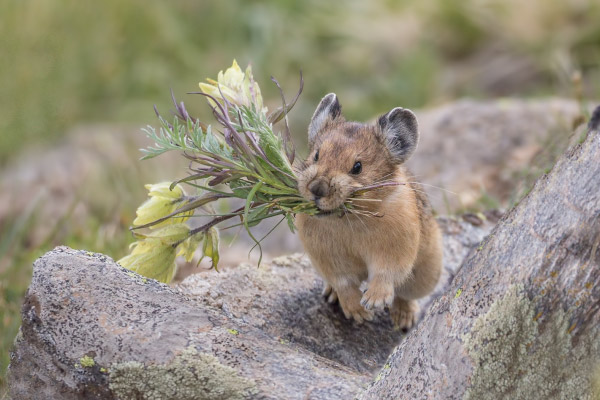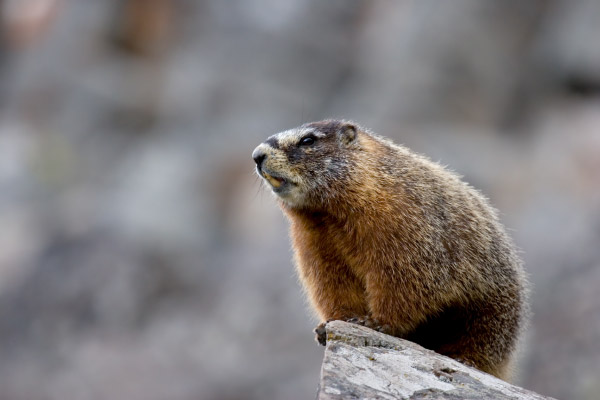While we local humans hit the slopes, our local wildlife have different responses to the cold. Creatures take one of three routes; they can head for warmer weather, take a long nap, or tough it out. You might have noticed that your favorite birds have migrated south for the winter, but what about our fluffy friends who can’t escape to the tropics? The winter survival strategies of local wildlife are truly mesmerizing as they teeter on the brink of death for weeks at a time or hurdle through the harshest conditions. Most animals add layers of fur and fat for the winter months, but what they do behind closed lairs can vary greatly. 
When thinking of an animal taking that long nap during hibernation, most of us think of the mighty black bear. Shockingly, while bears are often the mascot of hibernation, they are not considered true hibernators. Bears enter a state called torpor, which differs from hibernation in that hibernation is an extended state of torpor. Torpor includes physiological changes like decreased body temperature, decreased metabolism, lowered heart rate and slower breathing. Hibernation is an extended state long-term dormancy. Bears are not truly in hibernation because they can wake up fully when conditions prompt them. Once awake, bears do tasks that require a higher metabolism like emerging from their lairs to consume more calories. If the poster-child for hibernation is not even a true hibernator, then who is? A true hibernator differs from the bear in that they are depressing their biological processes significantly more. Many rodents are true hibernators, but the yellow-bellied marmot takes hibernation to the next level. Marmots need to survive winter in the harshest of environments, high above the treeline where all living things struggle against freezing temperatures, wind speeds up to 48-79 miles per hour, and harsh sunlight. Therefore, they spend half of their lives hibernating in their lairs, usually a system of complex underground tunnels. They have to consume as many calories as possible, and make sure their lairs are sealed well, because when they go down for winter, there is no getting back up until it is springtime. Once in hibernation, their body temperature is only a few degrees warmer than their insulated den and they take only two breaths per minute.This is such an extreme way to survive the frigid months that some marmots never wake up and enter eternal slumber.
A true hibernator differs from the bear in that they are depressing their biological processes significantly more. Many rodents are true hibernators, but the yellow-bellied marmot takes hibernation to the next level. Marmots need to survive winter in the harshest of environments, high above the treeline where all living things struggle against freezing temperatures, wind speeds up to 48-79 miles per hour, and harsh sunlight. Therefore, they spend half of their lives hibernating in their lairs, usually a system of complex underground tunnels. They have to consume as many calories as possible, and make sure their lairs are sealed well, because when they go down for winter, there is no getting back up until it is springtime. Once in hibernation, their body temperature is only a few degrees warmer than their insulated den and they take only two breaths per minute.This is such an extreme way to survive the frigid months that some marmots never wake up and enter eternal slumber. Another alpine creature has a different method to survive these winter conditions in their lair. Most of us would not mind taking a few days off work to cuddle up at home with our favorite snacks during those winter storms. Pikas work tirelessly in the summer to cache dried food, or haypiles, in their burrows. Their thick coat and high metabolism keeps them warm as they survive the elements from the safety of their den all alone. As an impeccable feat, these animals who are no larger than a potato have to find enough food to last nine months and keep their lairs insulated all by themselves! Pikas resiliency proves them to be some of the toughest, and cutest, winter survivors.
Another alpine creature has a different method to survive these winter conditions in their lair. Most of us would not mind taking a few days off work to cuddle up at home with our favorite snacks during those winter storms. Pikas work tirelessly in the summer to cache dried food, or haypiles, in their burrows. Their thick coat and high metabolism keeps them warm as they survive the elements from the safety of their den all alone. As an impeccable feat, these animals who are no larger than a potato have to find enough food to last nine months and keep their lairs insulated all by themselves! Pikas resiliency proves them to be some of the toughest, and cutest, winter survivors. As humans, some of us opt to layer up during the cold and adventure in snow, while some choose the warmth of their home. No matter how you get by in winter, recall the extreme feats of our furry friends and I am sure you’ll feel appreciation.
As humans, some of us opt to layer up during the cold and adventure in snow, while some choose the warmth of their home. No matter how you get by in winter, recall the extreme feats of our furry friends and I am sure you’ll feel appreciation.
Resources
https://www.britannica.com/science/hibernation
https://www.nps.gov/articles/pikas-brief.htm
https://www.nationalgeographic.com/animals/article/animals-hibernation-science-nature-biology-sleep
https://pubmed.ncbi.nlm.nih.gov/8190354/
Tayler Branson is a Naturalist at Walking Mountains Science Center. Her preferred method of winter survival is resisting the elements with her favorite snacks the same way the pika does.






